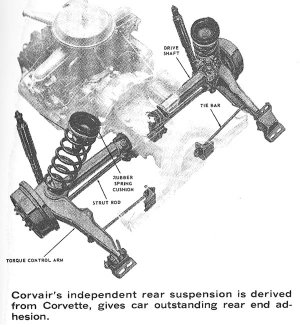Sorry, not enough info and feels like a setup. Like Dirty Harry is gonna shoot me for the wrong answer.
Not familiar with the Corvair setup, but the old VW type 2 up to '67 used a similar sounding setup but they were actually gear reduction so the standard type1 transaxle could be used. You just had to be sure if you were installing a type 1 you switched the differential ring gear to the other side or you had 1 gear fwd and 4 reverse. They had a swing axles, not the constant velocity and each gearbox IIRC had oil and there was a spec for pre filling or a level plug in the side of the box but it could also go through the axle housings and share oil with the transaxle. They had huge caged roller bearings on both sides of each gear. They were pretty bullet proof but usually if they started to leak it was because the bearing were worn and sloppy. I had to go through the reduction housing on one side on my '65 type 2. On them if you could get any play in the stub axle you had a bad bearing. So I'd pull them apart and check the bearings ,gears and seals.


